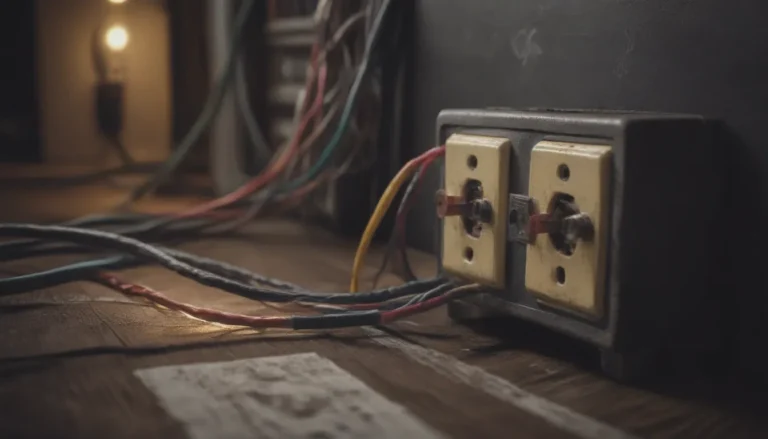Comprehensive Guide to Electrical Circuit Requirements for Kitchens

Are you planning a kitchen renovation or perhaps building a new home? One important aspect to consider is the electrical requirements for your kitchen. The kitchen is often the heart of the home and a room that requires more electrical power than any other space. To ensure your kitchen is safe and properly powered, it’s essential to understand the electrical circuit requirements set forth by the National Electrical Code (NEC).
In this comprehensive guide, we will delve deep into the electrical circuit requirements for kitchens, covering everything from refrigerator circuits to small appliance circuits. Whether you’re a seasoned DIY enthusiast or a first-time homeowner, this information will help you navigate the complexities of kitchen electrical systems with confidence.
Understanding Kitchen Electrical Circuits
In the past, most kitchen appliances were plugged into general lighting circuits. However, as kitchen appliances have grown in size and power requirements, it has become essential to have dedicated circuits for each major appliance. The NEC specifies that kitchens should be served by multiple circuits to ensure safety and adequate power supply.
Let’s break down the key electrical circuit requirements for various kitchen appliances and components:
Refrigerator Circuit
A modern refrigerator requires a dedicated 20-amp circuit. During any major remodeling, it’s recommended to install a dedicated circuit for the refrigerator to ensure proper power supply. The wiring for this circuit should be 12/2 non-metallic (NM) sheathed wire with a ground. While GFCI protection may not be necessary, AFCI protection is typically required for the refrigerator circuit.
Range Circuit
An electric range generally needs a dedicated 240/250-volt, 50-amp circuit. If you’re considering installing an electric range in the future, it’s wise to have this circuit in place during the remodel. The wiring for the range circuit should be 6/3 NM cable or #6 THHN wire in a conduit. Keep in mind that different range models may have varying amp requirements, so always consult with a professional electrician to ensure the correct circuit setup.
Dishwasher Circuit
When installing a dishwasher, a dedicated 120/125-volt, 15-amp circuit is necessary. The wiring for this circuit should be 14/2 NM wire with a ground. It’s important to provide a means of local disconnection or panel lock-out for the dishwasher to meet safety standards. Consult with local code authorities to determine the requirements for GFCI and AFCI protection for the dishwasher circuit.
Garbage Disposal Circuit
A garbage disposal also requires a dedicated 15-amp circuit. The wiring for the disposal circuit should be 14/2 NM cable with a ground. Depending on local codes, the garbage disposal may share a circuit with the dishwasher. Always check with your building inspector to ensure compliance with GFCI and AFCI protection requirements for the disposal circuit.
Microwave Oven Circuit
For a microwave oven, a dedicated 20-amp, 120/125-volt circuit is necessary. The wiring should be 12/2 NM wire with a ground. Larger microwave ovens that draw more power should have their own dedicated circuits to prevent overloading. Consider AFCI protection for the microwave circuit to enhance safety.
Small Appliance Circuits
Countertop appliances like toasters, electric griddles, and coffee pots require two dedicated 20-amp, 120/125-volt circuits. These circuits should always have both GFCI and AFCI protection to ensure safety. When planning the placement of outlets for small appliances, consider future needs and add additional circuits if necessary.
Lighting Circuit
A kitchen lighting circuit typically requires a 15-amp, 120/125-volt dedicated circuit. This circuit powers ceiling fixtures, canister lights, under-cabinet lights, and other lighting fixtures in the kitchen. While GFCI protection may not be necessary for lighting circuits, AFCI protection is generally required for all lighting circuits.
Kitchen Wiring Considerations
In older homes, kitchen wiring systems may be undersized for modern electrical demands. During major kitchen remodeling projects that require building permits, it’s common to update the kitchen wiring to meet current code requirements. New construction and major remodels often involve adding electrical circuits and providing GFCI and AFCI protection for enhanced safety.
AFCI Protection in Kitchens
AFCI protection has become a standard requirement in kitchens to prevent electrical fires caused by arcing. All 15-amp and 20-amp circuits in the kitchen should have AFCI protection. This can be achieved by using AFCI circuit breakers or outlets. It’s important to note that AFCI protection is different from GFCI protection, and both may be required for specific kitchen circuits.
Consult with your local authorities to determine the AFCI requirements for your kitchen. It’s crucial to adhere to these regulations when performing any electrical work in your kitchen to ensure compliance with safety standards.
Conclusion
Understanding the electrical circuit requirements for kitchens is essential for ensuring the safety and functionality of your kitchen space. By following the guidelines set forth by the National Electrical Code and consulting with professionals when needed, you can create a well-equipped kitchen that meets your electrical needs.
Whether you’re planning a minor kitchen upgrade or a full remodel, consider the electrical demands of your kitchen appliances and components. With proper wiring and circuit setup, you can enjoy a safe and efficient kitchen environment for years to come. Remember to prioritize safety and compliance with electrical codes to maintain a secure home environment.





